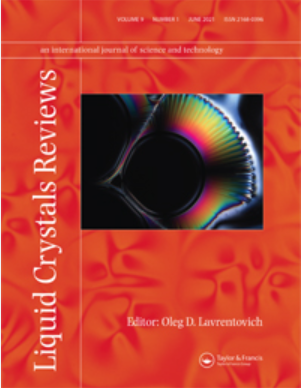增强现实和虚拟现实系统中收敛调节冲突的液晶技术综述
IF 4.2
3区 材料科学
Q2 CHEMISTRY, PHYSICAL
引用次数: 14
摘要
在增强现实(AR)和虚拟现实(VR)系统的帮助下,用户可以通过近眼显示器(NED)接收信息并相互连接。然而,需要解决一些挑战,而光学是主要的瓶颈。佩戴当前NED的用户通常会遭遇边缘适应冲突(VAC)。此外,有屈光不正的人需要一副处方镜片才能清楚地看到虚拟图像和/或环境。因此,应开发具有视力矫正功能的无VAC AR/VR系统。此外,AR/VR系统必须采用纤薄的外形设计。具有薄形状因子的液晶(LC)光学元件已被证明用于多功能光学系统中的光调制;因此,在过去的十年中,已经为AR/VR系统提出了基于LC的解决方案。在此,我们对基于LC的光学系统的现有文献进行了全面的综述,并提出了实现更好的NED系统的可能解决方案。这篇综述概述了LC光学在AR和VR系统中的最新进展。它专注于NED的基本光学、VAC和当前基于LC的解决方案的起源、用于视力矫正功能的LC透镜,以及使用LC透镜解决上述两个挑战的指南。本文章由计算机程序翻译,如有差异,请以英文原文为准。
Liquid crystal technology for vergence-accommodation conflicts in augmented reality and virtual reality systems: a review
With the help of augmented reality (AR) and virtual reality (VR) systems, users can receive information and connect with each other via near-eye displays (NEDs). However, several challenges need to be addressed, and the optics are the major bottlenecks. Users wearing current NEDs typically suffer from vergence-accommodation conflict (VAC). Furthermore, people with refractive errors need a pair of prescription lenses to clearly see the virtual image and/or environment. Hence, VAC-free AR/VR systems with vision correction functions should be developed. Furthermore, the AR/VR systems must be designed with slim form factors. Liquid crystal (LC) optical elements with a thin form factor have been demonstrated for light modulation in versatile optical systems; thus, LC-based solutions have been proposed for AR/VR systems in the past decade. Herein, we provide a comprehensive review on the existing literature on LC-based optical systems and suggest possible solutions to realize a better NED system. This review provides an overview of the state-of-the-art progress of LC optics in AR and VR systems. It focuses on the fundamental optics of NEDs, origins of VAC and current LC-based solutions, LC lenses for vision correction function, and the guidelines for solving the two aforementioned challenges using LC lenses.
求助全文
通过发布文献求助,成功后即可免费获取论文全文。
去求助
来源期刊

Liquid Crystals Reviews
CHEMISTRY, PHYSICALCRYSTALLOGRAPHY&n-CRYSTALLOGRAPHY
CiteScore
7.60
自引率
5.90%
发文量
8
期刊介绍:
Liquid Crystals Reviews publishes review articles on all aspects of liquid crystal fundamentals and applied science, including experimental and theoretical studies of physical and chemical properties, molecular design and synthesis and engineering of liquid crystal devices. The Journal fosters cross-disciplinary exchange of ideas, encouraging authors to present material at a level accessible to specialists from other fields of science and engineering. Liquid Crystals Reviews provides the scientific community, in both academia and industry, with a publication of standing, guaranteed by the Editors and by the International Editorial Board who are active scientists in the worldwide liquid crystal community.
 求助内容:
求助内容: 应助结果提醒方式:
应助结果提醒方式:


